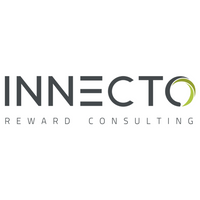How organisations are aligning their digital strategy with their people strategy
The last few years have shown us how unpredictable the economy can be. New competitors in the market are generally more tech-reliant in how they deliver products and services and are much more agile and client-responsive. This has led to a more sophisticated and faster customer buying experience and greater service expectations.
Generally, potential employees have the same expectations. Organisations now must market themselves as an employer of choice to attract potential recruits and will be scrutinised by candidates at every step of the process of joining a business, starting from what they experience during the interview. Once employed, we see the expectations of the employer grow, too, in terms of commitment, performance levels, and productivity.
Implementing a competitive and engaging employee experience
These two-way expectations have meant organisations have had to elevate their People Strategy, review what they need in terms of talent and consider how to implement a competitive and engaging employee experience.
HR leaders have become marketeers and great customer (employee) experience gurus, but if you look at what commercial B2B or B2C companies do well, it is that their success is driven by metrics. From data, these organisations refine their service offerings, target customers and identify what type of people they need to deliver these goals, and it is no different for HR.
In the past, HR has been more reactive to demands and often several steps behind the business, trying to catch up and get the people strategy deployed. And as soon as they were partially finished, the business had changed its requirements. Now, we see HR being much more proactive, staying close to and understanding the external market, the recruitment market, the talent market, and being aware of up-and-coming companies in their space and their plans.
Staying one step ahead
They stay one step ahead and bring this insight to the executive table. This can only be realised through data and meaningful analytics. Unless you work in finance, it is not easy extracting data – running numbers, trying to work out which data is meaningful, establishing which data provides a robust benchmark and identifying what the data says.
Unless this is understood, it is difficult to deploy effectively and be clear on the direction of travel. If we consider how many resource hours it takes to set up, compile data and information, make sense of it, refresh, and present back, it is extraordinary. Time can be better spent, and the outputs can be more effective and strategic, when this legwork is done for you.
HR software has expanded in the market and there are innovative and engaging platforms available. These systems no longer require lengthy and expensive integration, or a commitment to a solitary, bad fit, holistic system. For the most part, they are cloud-based out-of-the-box solutions and often relatively inexpensive.
Connecting employees to the process
HR software also not only handles the back-end process and analytics but also connects employees to the process. Using recruitment software as an example, if the right software is selected, this would not only allow a candidate to engage and move through the recruitment process in a slick way that reflects the employer branding, but it allows the recruiter and the potential hiring manager to communicate and engage in the system too. The advantage is being able to view insights to allow improvement of either great quality candidate selection or improvement in the recruitment process.
Of course, recruitment software is just one of the many types of HR platforms available, from a wide range of providers. For example, at Innecto, our digital software platforms help our clients leverage their reward strategy, with tools covering external and internal pay insights, compensation management, job evaluation, organisational design, and employee engagement and recognition.
People strategies are often well considered and have the approval of executives and/or board, but implementation and deployment are often overlooked and under-budgeted. Therefore, to ensure continued success, ensure your HR digital strategy is part of your people strategy.
Supplied by REBA Associate Member, Innecto Reward Consulting
The UK’s largest independent pay and reward consultancy, transforming pay into performance.








